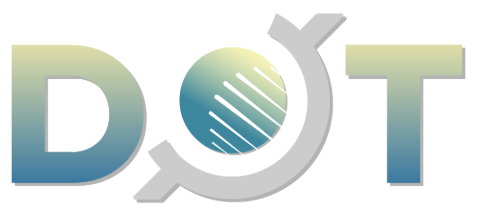Editor's note: On July 9, the U.S. government faces the deadline for suspending the so-called "reciprocal tariffs" for 90 days. President Trump has clearly stated that he does not intend to extend this deadline. However, on July 7 local time, he announced on social media that the U.S. would impose tariffs on products imported from 14 countries starting August 1, 2025, including a 25% tariff on all imports from Japan and South Korea. This move marks the U.S. government's shift toward implementing unilateral tariff policies against countries that have not yet reached trade agreements with it. What impact will this tariff policy have on the global economy in the future?
【Anchor】Hello everyone, welcome to DDN Business Insider. I am Yunfei Zhang. On July 9, the U.S. government faces the deadline for suspending the so-called "reciprocal tariffs" for 90 days. President Trump has clearly stated that he does not intend to extend this deadline. However, on July 7 local time, he announced on social media that the U.S. would impose tariffs on products imported from 14 countries starting August 1, 2025, including a 25% tariff on all imports from Japan and South Korea. This move marks the U.S. government's shift toward implementing unilateral tariff policies against countries that have not yet reached trade agreements with it. What impact will this tariff policy have on the global economy in the future? To discuss this issue, we have invited Cai Tongjuan, Director of the Macroeconomic Research Department and Researcher at the Chongyang Institute for Financial Studies, Renmin University of China, and Qin Tai, Deputy Director of Hua Fu Securities Research Institute and Head of the Macro and Non-Bank Real Estate Analysis Team. Welcome, both!
The slow overall negotiation process between the U.S. and various countries may be the key reason why Trump postponed the implementation of the tariff policy at the last minute. Ms. Cai, what do you believe are the reasons for the slow progress in tariff negotiations?
【Cai】The slow progress in tariff negotiations can be attributed to several factors, including the U.S.'s unilateral pressure strategy, resistance from allies, and insufficient negotiation coordination. Firstly, the U.S. maintains a high tariff stance. The Trump administration demands that trading partners accept relatively high baseline tariffs and specific high tariffs for certain industries, such as 25% on automobiles and steel. Major economies like the EU and Japan consider these demands unreasonable, especially since the automobile tariffs severely impact their core industries. Therefore, allies like the EU and the UK rejected the limited concessions offered by the U.S., such as a tariff exemption for 100,000 cars, viewing the standards as too low and seeking more favorable conditions. Secondly, the U.S. negotiation strategy is relatively chaotic. The Trump administration adopts a divide-and-conquer strategy, but lacks a unified standard, leading to a scattered negotiation process. For instance, the U.S. has different demands for countries like India and South Korea, increasing the complexity of negotiations. Lastly, the U.S. also faces international counter-pressure. China previously forced the U.S. to make concessions through tough negotiations, prompting some countries, like the EU, to adopt a firmer stance, even preparing to appeal to the WTO or implement retaliatory tariffs.
【Anchor】So, Mr.Qin, do you expect the tariff policies to fluctuate again?
【Qin】Currently, the background for the U.S. to ease tariffs on major global trading partners is the short-term stimulative effect from U.S. economic data, as well as the fundamental rule that manufacturing capacity cannot quickly shift back to the U.S. From this perspective, the U.S. government's current inclination to ease tariffs may be aimed at gaining more time for the restructuring of its domestic industrial chain and fiscal expansion policy with structural impacts. Once progress is made in the reconstruction of domestic production capacity, the possibility of fluctuations in U.S. tariff policies cannot be ruled out.
【Anchor】Alright. Last week, the U.S. House of Representatives passed the One Big Beautiful Bill Act (OBBB). What impact will this have on tariff policies?
【Qin】The main tax reduction content includes two aspects. First, personal tax reduction measures, which include the permanent implementation of the personal income tax reduction policy passed in Trump's first term in 2017, as well as certain new advancements in raising the tax threshold for individual and family taxpayers, along with an increase in the estate tax exemption amount. The second aspect is corporate tax reduction measures, which include allowing companies to fully expense domestic R&D costs, as well as the costs of machinery and other qualifying assets in a phased manner, encouraging companies to invest in increasing capacity and R&D activities.
As a supportive policy measure accompanying the tariffs, the new tax reduction bill in the U.S. may boost economic growth from two aspects: enhancing consumer demand among American residents and accelerating the return of manufacturing capacity to the U.S. The extension of previous tax cuts for residents, along with the newly raised tax threshold and certain income exemptions, will help increase the purchasing power of middle- and upper-income Americans. This could potentially alleviate the weakening of consumer capacity due to tariff measures and future inflationary pressures. The tax reductions for businesses encourage firms to accelerate investments in fixed assets, such as equipment, which help increase domestic capacity and may further enhance the growth rate of non-residential equipment investment in the U.S. If this large-scale fiscal expansion bill is passed by the U.S. Senate and quickly gains approval in the House of Representatives, domestic consumption and investment demand in the U.S. could be significantly boosted, increasing the likelihood of tariff policies being reversed in the future.
【Anchor】Additionally, we note that Fed Chair Powell recently stated that interest rates would have already been lowered if not for the tariffs. He also mentioned that if it weren't for concerns that tariffs might disrupt the Fed's efforts to control inflation, the Fed would likely continue to gradually lower rates this year. Ms. Cai, how do you view the Fed's interest rate path in light of tariff factors?
【Cai】The inflation risks brought by tariffs make the Fed's interest rate policies more cautious. Powell's statement indicates that without the uncertainty of trade policies, the Fed would have the conditions to lower rates. Although inflation in the U.S. has somewhat declined, it has not yet reached a stable standard, and tariffs could push up consumer prices, interfering with the disinflation process. Therefore, the pace of rate cuts will depend on the future implementation of tariffs and their impact on prices. If tariffs are fully enacted, this could delay or slow down the pace of rate cuts. Conversely, if tariff risks ease, the Fed may initiate gradual rate cuts in the second half of the year to support a soft landing for the U.S. economy.
【Anchor】Yes, Mr. Qin, what are your thoughts on this?
【Qin】In its June meeting, the Fed maintained interest rates for the fourth consecutive time but simultaneously revised its forecasts for unemployment and inflation. The dot plot also revealed rare divergence. The expectation that there will be no rate hikes this year, and two rate cuts has become popular, and the number of Fed members who believe rates will not be cut this year has significantly increased. This rare internal divergence within the Fed may be significantly influenced by the new tax reduction bill, which could have a potential positive impact on the U.S. economy. If the large-scale bill is quickly passed by Congress, the current stagflationary conditions that the Fed anticipates could rapidly shift to a structure of high growth and higher inflation coexisting. In this scenario, the reasonable choice for the Fed might be to maintain the current interest rate level and actively consider structurally increasing its holdings of U.S. Treasuries.
【Anchor】Additionally, we are aware that due to Fed Chair Powell's cautious stance on interest rate cuts, there are rumors suggesting that Trump is considering appointing a "shadow chair" for the Fed. Mr. Qin, do you think this will affect the Fed's interest rate plans for the second half of the year? Besides the factors mentioned above, what other factors do you think may influence the Fed's interest rate decisions?
【Qin】Powell pointed out that higher tariffs could still drive up prices and put pressure on economic activity. However, it's worth noting that the Fed's expectations regarding U.S. tariff levels and their economic impact have declined since peaking in April. Powell currently believes that tariffs may not significantly boost inflation. If inflation is better controlled and the increases are less than the Fed's expectations, the Fed may act more swiftly to cut rates. In fact, whether the tariff rates will be further increased, and where the policy will head after the tariff relief period ends, still depends on the speed and ultimate strength with which the U.S. Congress passes the OBBB that the U.S. government is actively promoting. If the current fiscal expansion bill is rapidly approved, its extensive tax cuts for residents and businesses could quickly boost U.S. consumption and investment demand, as well as future potential supply capacity. Building on the already strong performance of U.S. consumer spending and capital investment in Q1, this could lead to new growth momentum. At that point, the U.S. may still have a significant chance of entering a high-growth, relatively high-inflation scenario, and the government may seek higher tariff rates. In this situation, the Fed's room for rate cuts would be considerably limited. The current low level of the dollar index may rebound.
【Anchor】Yes, Ms. Cai, what factors do you believe will influence the Fed's interest rate decisions?
【Cai】Regarding the establishment of a shadow Chair for the Fed, although this position has no formal power, if Trump continues to apply public pressure, it could influence market expectations. It would weaken the Fed's independence and indirectly affect its policy decisions. However, Powell's term lasts until 2026, so in the short term, Fed decisions will still be primarily guided by economic data. Excluding political interference, key factors influencing rate cuts in the second half of the year include the speed of core inflation decline, the resilience of the labor market, signs of weakening consumption, and changes in the global economy and geopolitical risks. If inflation stabilizes and the economy moderately slows, there may still be a slight rate cut this year, but the path to such cuts will be more cautious.
【Anchor】OK, thank you. That's all for this episode. Remember to follow us on YouTube or download our APP. I'm Yunfei Zhang, thanks for watching, and see you next time.
Anchor: Laura Cheung | Edited: Kelly Yang, Laura Cheung, Rachel Liu | Translate: Kato Ip | Proofread: Chris Liu
Related News:
DDN Business Insider | Ceasefire or stalemate? Analysts discuss geopolitical risks and market trends




















Comment